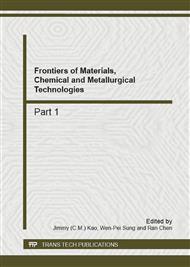p.694
p.698
p.702
p.706
p.710
p.715
p.719
p.723
p.727
The Effect of Polyester Structures on the Damping Property of Polyurethane Elastomers
Abstract:
Polyurethane elastomers (PU) based on polyester, TDI-100 and MOCA were synthesized by two step method. The polyurethane elastomers were investigated by infrared spectroscopy (FTIR), atomic force microscope (AFM) and dynamic thermal mechanical analyses (DMA). The results show that the structure of polyester plays an important role in polyurethane damping materials. When the polyester contains more side methyl groups, the polyurethane material has high damping properties (tan δ) and wide damping zones. So the polyurethane damping property can be improved by choosing polyester with appropriate structure.
Info:
Periodical:
Pages:
710-714
Citation:
Online since:
October 2012
Authors:
Keywords:
Price:
Сopyright:
© 2012 Trans Tech Publications Ltd. All Rights Reserved
Share:
Citation:


